Why Should I Upgrade to a Firewood Rack Now for Cleaner Burns and Lower Costs?
十一月 6, 2025 by admin
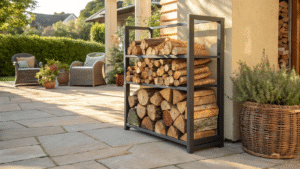
I’ve hauled, split, and burned more cords than I can count, and one insight keeps proving itself every season: a well-designed firewood rack is the cheapest way to get cleaner burns, less mess, and fewer headaches. The right rack controls airflow, moisture, and pests—three variables that decide whether your fire roars or smolders. In this article, I’ll share what I’ve learned about rack design, sizing, placement, and upkeep, backed by research and hard-earned experience.
Summary: I optimize my firewood rack setup around airflow, elevation, and smart covers to hit ideal moisture content (15–20%) for hotter, safer, and more efficient fires—while cutting time, waste, and long-term costs.
Before we dive into specifics, here’s the bridge: if you’re struggling with smoky fires, damp logs, or collapsing stacks, it’s not just the wood—it’s your storage system. A few changes in rack design and placement can transform your burn quality overnight.
Table of Contents
- What Core Benefits Do Firewood Racks Deliver That Piles Can’t?
- How Do I Size a Firewood Rack to Match My Burn Rate and Space?
- Which Materials and Designs Give Me the Best Durability Outdoors?
- Where Should I Place a Firewood Rack for Faster Seasoning and Fewer Pests?
- What Maintenance and Accessories Keep My Wood Burn-Ready All Season?
## What Core Benefits Do Firewood Racks Deliver That Piles Can’t?
I used to stack on pallets and hope for the best. Switching to a proper rack—elevated, vented, and tidy—fixed most of my burn issues in a week.
This section highlights airflow, moisture control, pest deterrence, and safety benefits that only a well-designed rack can provide.

*Image Description: Elevated firewood rack with gaps for airflow, keeping splits off damp ground to reduce mold and rot.*
My practical takeaways:
– Elevation matters: Raising wood 4–6 inches off soil stops moisture wicking and speeds seasoning by letting air flow beneath.
– Airflow equals cleaner burns: Open sides and properly spaced stacks reduce smoke and creosote, improving combustion and stove efficiency.
– Pest control: Separation from ground discourages termites and ants; tidy racks also make quick visual checks easier.
– Safer, stable stacks: Racks with end supports prevent collapses and trip hazards; your back will thank you.
– Indoor cleanliness: Smaller staging racks near the hearth keep chips contained and reduce tracking debris through the house.
Research insight: Seasoned firewood typically targets 15–20% moisture for efficient burning. Poor storage slows seasoning and increases creosote buildup, raising chimney-cleaning frequency and fire risk. Learn more about moisture and seasoning basics in this extension overview[^1].
A well-built rack delivers cleaner fires, fewer pests, and faster seasoning—three benefits you’ll feel every single burn.
## How Do I Size a Firewood Rack to Match My Burn Rate and Space?
I stopped guessing when I translated my winter burn rate into rack capacity—and I haven’t run short mid-season since.
This section explains cord measurements, rack length estimates, and small-space solutions for patios and porches.
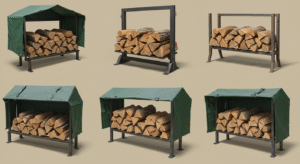
Sizing fundamentals:
– Know your cord: A full cord is 4 ft × 4 ft × 8 ft (128 cu ft). A face cord is one row 4 ft high × 8 ft long with 16-inch logs (~1/3 of a full cord).
– Common rack sizes:
– Indoors/porch: 2–4 ft racks hold a few days’ wood and kindling.
– Quarter-cord: 4–6 ft racks work for light use or supplemental storage.
– Half/full cord: 8–12 ft racks or modular systems for heavy winter burners.
– Double-row vs single-row: If you burn a lot, consider a two-row rack (same height/depth) for higher density without expanding footprint.
– Season + burn: If you’re seasoning next year’s wood while burning this year’s, you’ll need at least 1.5–2× your single-season capacity to avoid shortages.
External perspective: The U.S. Energy Information Administration offers clear definitions of cords and practical firewood facts for sizing decisions[^2].
Matching rack size to your actual consumption saves money, reduces emergency purchases, and keeps seasoned wood ready when you need it.
## Which Materials and Designs Give Me the Best Durability Outdoors?
After a couple flimsy racks rusted or sagged, I shifted to heavier-gauge steel with sensible bracing—and the difference was night and day.
This section compares powder-coated steel, aluminum, and wood racks, and calls out build features that extend life and stability.

*Image Description: Side-by-side steel and wooden racks on gravel, highlighting bracing, elevation feet, and end supports for longevity.*
What’s worked for me:
– Powder-coated steel: Great balance of strength and cost. Look for thicker tubing, welded or well-braced joints, and UV-resistant coatings. Touch up chips to prevent rust.
– Aluminum: Rustproof and light—ideal in humid/coastal climates. Make sure cross-bracing is robust to avoid flex.
– Treated wood: Warm, natural look; requires more upkeep and careful hardware selection (stainless/galvanized).
– Design details that matter:
– Elevated base: Keep bottom slats 4–6 inches off the ground for drainage.
– Cross-bracing: Prevents sway in wind and maintains straight stacks.
– End supports: Curved or angled ends reduce spillover and stabilize stacks.
– Modular extensions: Add capacity without replacing the whole rack.
– Tool-free assembly: Faster seasonal setup and takedown.
Helpful comparison
| Feature | Steel (Powder-Coated) | Aluminum | Treated Wood |
|—|—|—|—|
| Durability | High | Medium–High | Medium |
| Rust Resistance | High (with care) | Excellent | Depends on finish |
| Weight/Handling | Heavy | Light | Heavy |
| Upkeep | Low–Medium | Low | Medium–High |
| Cost | Moderate | Higher | Lower–Moderate |
Authoritative guidance: University extensions regularly emphasize airflow, elevation, and dry storage to curb creosote and improve safety[^3].
A rack built for weather and load—with real bracing and elevation—will outlast cheaper alternatives and keep your wood burn-ready longer.
## Where Should I Place a Firewood Rack for Faster Seasoning and Fewer Pests?
Placement changed everything for me. Sun plus wind beats shade every time—especially if you pair it with a breathable top cover.
This section shows how to position your rack to maximize airflow, reduce pest pressure, and simplify hauling.

*Image Description: Firewood rack on a gravel pad, 6 inches off the ground, covered on top with open sides to promote airflow and fast seasoning.*
Placement tips I rely on:
– Sun and breeze: A sunny, ventilated spot seasons wood faster than shady corners.
– Ground prep: Gravel pads or pavers improve drainage, reduce mud, and limit pests.
– Clearance: Leave a few inches behind/under for airflow; keep 3–5 feet from walls and wooden siding.
– Smart cover: Top-only covers shed rain while leaving sides open; full tarps trap moisture and slow drying.
– Safety spacing: Follow local codes and avoid storing large stacks in garages or against structures.
Fire safety reminder: The NFPA provides guidance on safe storage practices and reducing ignition risks around homes[^4].
Put your rack where the weather helps you—sun and wind are free allies for seasoning and cleanliness.
## What Maintenance and Accessories Keep My Wood Burn-Ready All Season?
Small upgrades made my fires cleaner and my routine easier—especially during wet, messy stretches of winter.
This section covers accessories, simple maintenance, and quality-of-life improvements that protect your investment.

*Image Description: Firewood rack with vented cover, moisture meter, canvas log carrier, and kindling splitter arranged for efficient daily use.*
My go-to kit:
– Vented rack cover: UV-resistant and breathable; secure it tight but keep side airflow open.
– Moisture meter: Cheap and essential—aim for 15–20% moisture before burning.
– Log carriers: Heavy-duty canvas or leather totes keep debris out of the house.
– Kindling splitter: Safer than swinging a hatchet indoors; makes consistent kindling fast.
– Indoor staging rack: Park a small rack near the hearth to reduce trips and mess.
Maintenance rhythms:
– Rotate and label: Burn oldest wood first; mark stacks by season.
– Inspect hardware: Tighten bolts, check for rust or UV damage on straps once per season.
– Pest management: Trim weeds, keep soil clear, and avoid contact with wood siding.
– Clean zone: Use a mat under indoor racks to catch chips and bark.
EPA insight: Burn Wise resources outline how seasoned wood and efficient burning reduce smoke and emissions[^5].
A vented cover plus a moisture meter are the two quickest upgrades that consistently improve burn quality and convenience.
Conclusion
Firewood racks aren’t just storage—they’re combustion systems in disguise. When I prioritize elevation, airflow, and smart placement, my fires start easier, burn hotter, and produce less creosote. Choose durable materials, size your rack to your burn rate, and add a vented cover and moisture meter. If you’ve been fighting damp logs and smoky rooms, upgrade your rack setup today—you’ll feel the difference on your very next burn.
Meta description: Discover insight-driven firewood rack strategies—airflow, sizing, placement, and maintenance—for cleaner burns, faster seasoning, and lower long-term costs.
External References
[^1]: Oregon State University Extension — Firewood Seasoning Basics — Used for moisture targets and seasoning fundamentals relevant to rack design and placement. ↩ back to article
[^2]: U.S. EIA — Firewood and Wood Pellets — Referenced for cord and face cord definitions to help with rack sizing. ↩ back to article
[^3]: University of Minnesota Extension — Firewood Storage and Use — Cited for airflow, elevation, and safe storage principles. ↩ back to article
[^4]: NFPA — Home Fire Safety Resources — Used for general fire safety and storage distance considerations around homes. ↩ back to article
[^5]: EPA Burn Wise — Efficient Wood Burning — Referenced for emissions and efficiency best practices tied to seasoned firewood. ↩ back to article
Written by
admin
You may also be interested in:
How Can an Indoor/Outdoor Pickleball Net Frame Deliver Long-Term Durability and Better Training Outcomes
As a recreational league organ
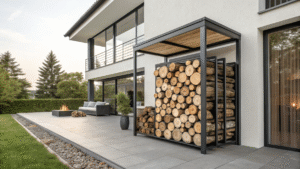
What Metal Firewood Rack Trends Should You Watch in 2025?
I’ve spent the last few years
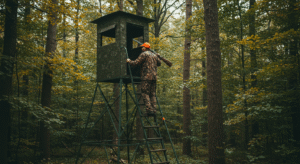
Which Hunting Stand Is Best for Outdoor Activities
Choosing the right hunting stand determines comfort, concealment, and safety throughout the season
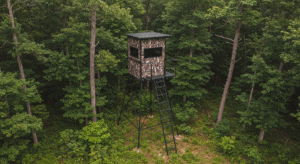
Why Build a 4x4 Platform With a 10-Foot Height Hunting Stand
I’ve built a few compact hunti

How to Choose the Best Hunting Stand Tower for Your Next Adventure
Choosing the right hunting stand tower ensures safety, comfort, and optimal visibility. Factors like weight capacity, material, setup ease, and camouflage effectiveness are key to making the best choice. This guide will help you understand the types of stands and expert tips to select the perfect one for your needs.
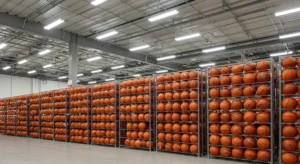
Adapting Basketball Storage Racks for Different Spaces?
Basketball storage racks can be customized for both small home spaces and large sports complexes, optimizing space and functionality. Strategic placement, modular designs, and mobile units enhance organization and accessibility, ensuring efficient storage solutions tailored to specific environments.

Evaluating the Cost and Value of Basketball Storage Racks?
Basketball storage racks vary in price, reflecting differences in material quality, capacity, and design. Understanding the cost and value can guide informed purchasing decisions. This guide explores key factors, technical specifications, and how to evaluate the best value for basketball storage racks.
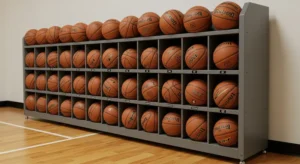
Daily Maintenance and Cleaning of Basketball Storage Racks?
Basketball storage racks are essential for keeping equipment organized and accessible. However, regular maintenance and cleaning are crucial to preserve their functionality and appearance. In this guide, we explore how to maintain basketball storage racks, common issues encountered, and effective solutions.
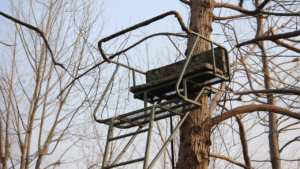
How to Choose Which Stand to Hunt
Selecting the right hunting stand is crucial for success, influenced by environmental factors, game patterns, seasonal changes, personal preferences, and technology. Assessing terrain, animal behavior, and climatic conditions helps optimize stand placement. Utilizing tools like GPS and trail cameras can further enhance strategic decisions, ensuring a rewarding hunting experience.
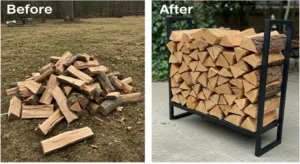
Ultimate Guide to Choosing a Durable Metal Firewood Rack
A durable metal firewood rack is essential for organizing firewood, offering protection from the elements and ensuring efficient storage. Key features to consider include material, construction quality, size, and design. Proper installation and regular maintenance enhance longevity. Selecting the right model based on personal needs ensures a reliable wood-burning experience.